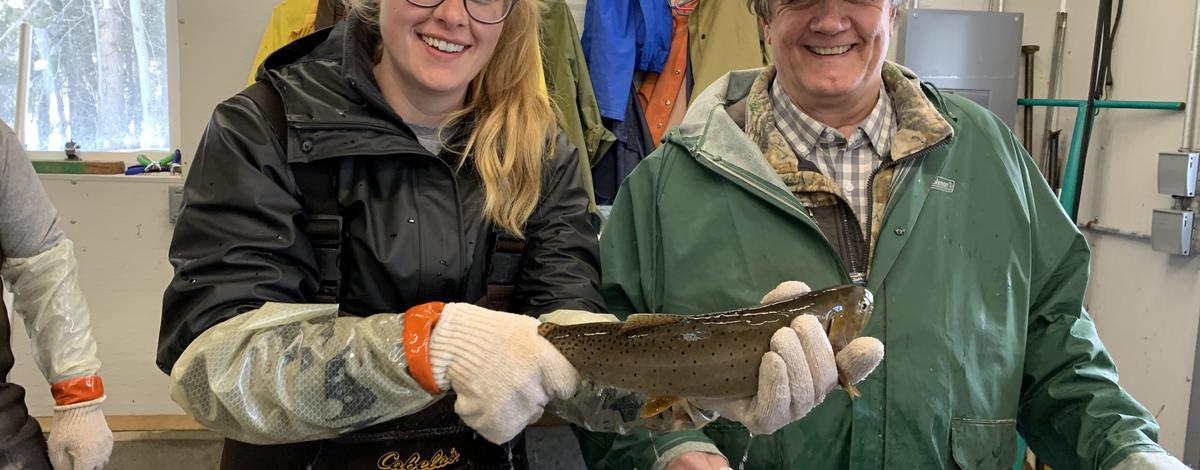Each year, the Idaho Department of Fish and Game spawns Yellowstone cutthroat trout at the Henrys Lake Fisheries Management Station in Island Park. This year, the fish ladder was opened on Jan. 28, and cutthroat trout quickly began to fill the spawning shed. More than 10,000 trout entered the spawning shed during February.
"With the help of staff across the state and our wonderful public volunteers, we were able to perform the 2020 spawn quickly and efficiently," Fisheries Biologist Jenn Vincent said.
Check out this video to see a typical Yellowstone cutthroat trout spawning day at Henrys Lake:
Over nine spawning dates in February, 2.8 million Yellowstone cutthroat trout eggs and 770,000 sterile hybrid trout eggs were generated.
To create the sterile hybrids prized by anglers at Henrys Lake, Idaho Fish and Game collects cutthroat eggs from Henrys Lake and fertilizes them with rainbow trout milt provided by the Hayspur Fish Hatchery. These eggs are then subjected to a pressure-shock treatment following fertilization. By subjecting the eggs to high amounts of pressure, cell division is interrupted creating what is referred to as a triploid fish. These triploid fish are unable to reproduce successfully and as hybrids they will grow faster and become much larger.
"By stocking the lake with sterile hybrid trout we can provide anglers with the opportunity to catch large trophy trout in Henrys Lake while also protecting our native Yellowstone cutthroat trout genetics and spawning habitat," Vincent said.
Eggs are incubated on site following fertilization for approximately 28 days, at which time all of the cutthroat trout eggs will be transported to the Mackay Fish Hatchery, and all of the hybrid eggs will be transported to the American Falls Fish Hatchery. These eggs will incubate, hatch and be raised to fingerling trout before being stocked back into Henrys Lake in June for hybrids and in September for Yellowstone cutthroat trout.
A genetic sample, in the form of a fin clip, is taken from each Yellowstone cutthroat trout that is spawned. This gives Fish and Game genetic records of all the hatchery fish parents, and allows them to track the progeny of these fish in the lake.
Over the last few years, genetic samples have been taken from every fish studied by biologists at Henrys Lake so that it can be matched back to the parent fish. This allows Fish and Game to gather information on the amount of natural/wild spawning contribution in the lake and in turn make better management decisions.

